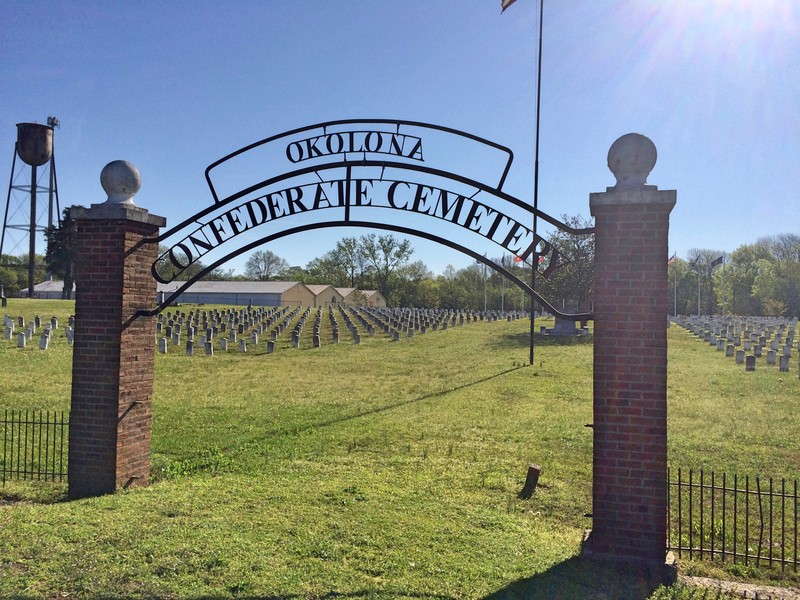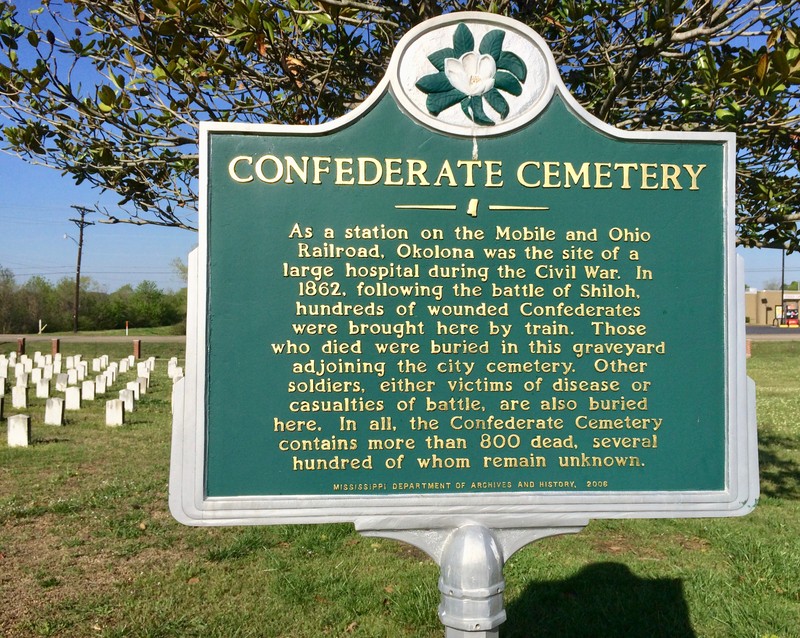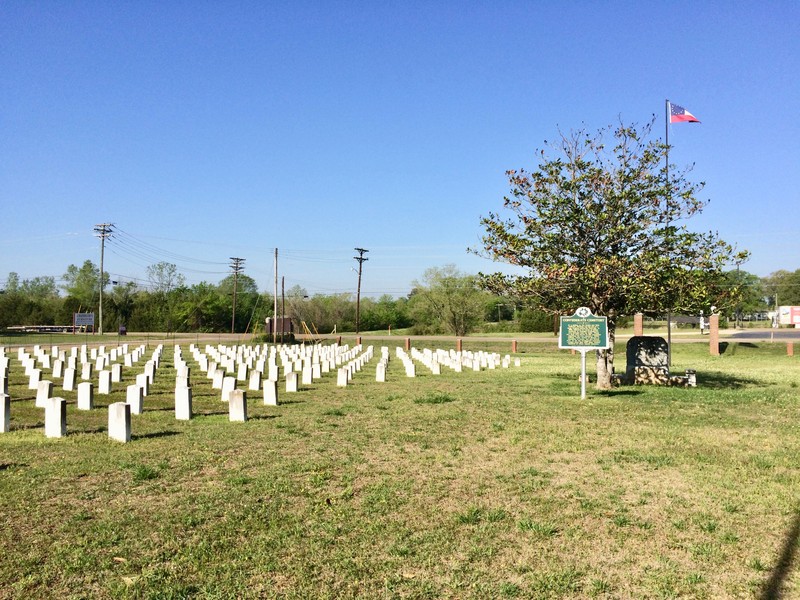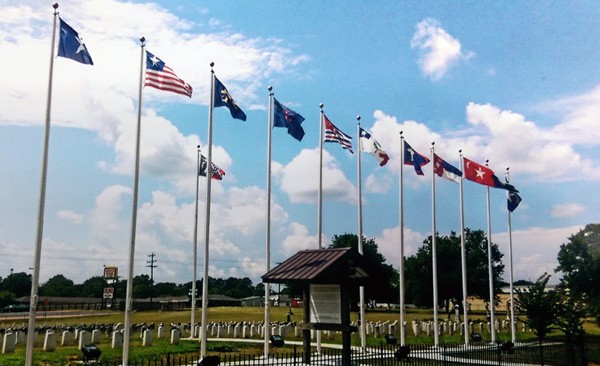Confederate Cemetery - Okolona, MS.
Introduction
Text-to-speech Audio
Images
Gates of the Cemetery.

Official Landmark of the Confederate Cemetery.

Official Landmark with the Cemetery in the background.

Cemetery with the flags flying in the wind.

Backstory and Context
Text-to-speech Audio
Because of its convenient placement, the location of the Okolona College proved ideal for a Confederate hospital. Soldiers made their way to this hospital by rail on the Mobile and Ohio Railroad. Whether they were suffering from war wounds or diseases, the patients that had died on the site were all buried in the Confederate Cemetery. Due to sheer numbers and lack of records of the more than eight hundred soldiers that had lost their lives at this facility, nearly half were never identified and remain unknown in unmarked graves. The stone tombstones have survived but most lack identifying characteristics.
General Albert Sidney Johnston, who led the charge in the battle of Shiloh against Major General Ulysses S. Grant, perished at the hospital but is not buried at the cemetery. Johnston was mortally wounded with a gunshot to the leg and was later transported to the hospital at the Okolona College campus where he succumbed to his wounds. After his death, he was then transported to the Texas State Cemetery. As a leading general, Johnston’s body received special treatment, while the bodies of most officers and men were buried as economically as possible.
The Confederate cemetery poorly maintained for many years and most of the records of the hospital were lost. The cemetery recently underwent a massive restoration effort as part of the effort to commemorate the 148th anniversary of the Battle of Okolona. The cemetery grounds were completely landscaped, and the site was the scene of a battle reenactment in 2012.
Cite This Entry
Tavish Riley and David J. Trowbridge. "Confederate Cemetery - Okolona, MS.." Clio: Your Guide to History. May 3, 2017. Accessed April 8, 2025. https://theclio.com/entry/37113
Sources
Shiloh. Civil War. Accessed 04/19/2017. http://www.civilwar.org/battlefields/shiloh.html.
Okolona Area Chamber of Commerce. Visitor Information. Accessed 04/19/2017. http://www.okolonams.org/visitors.html.
